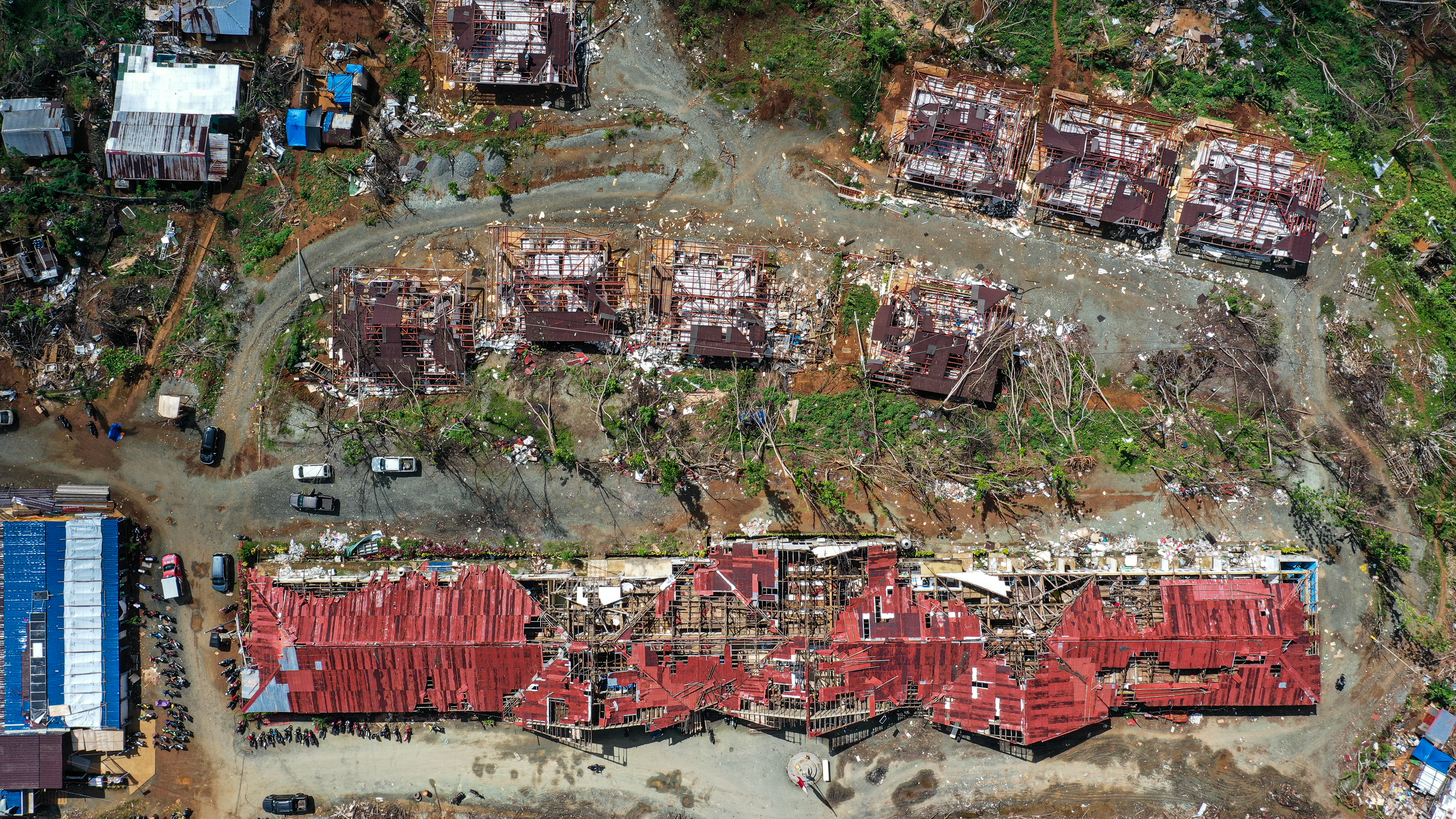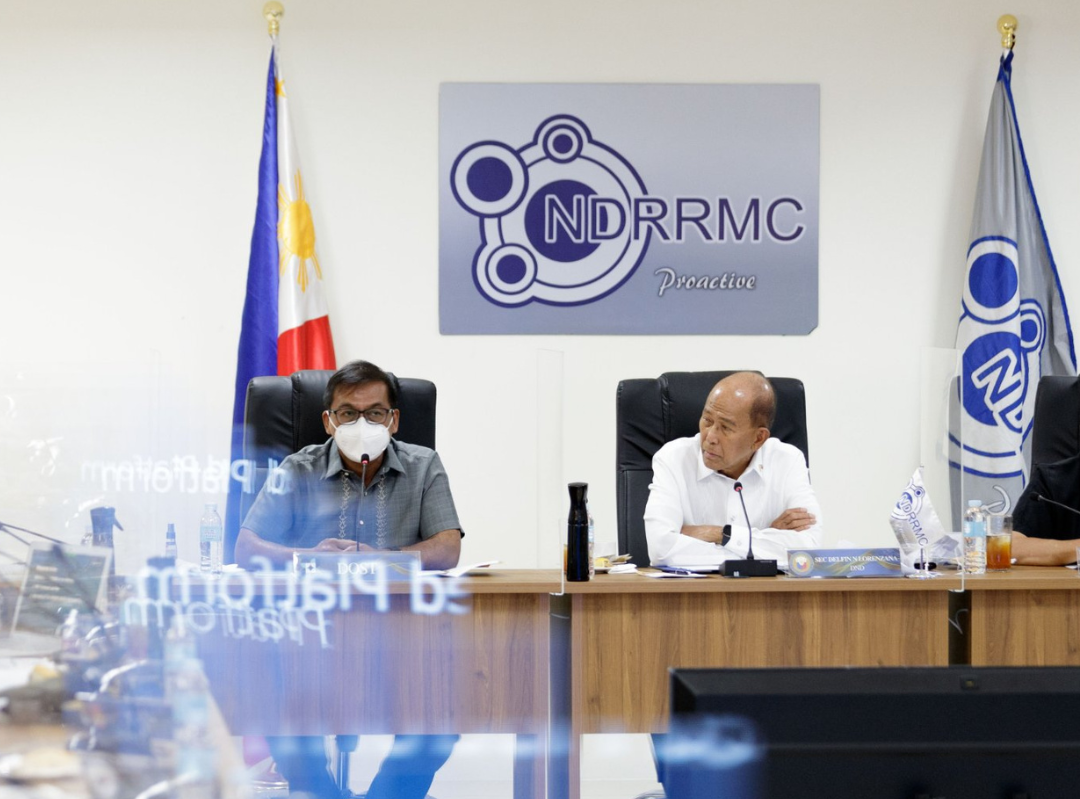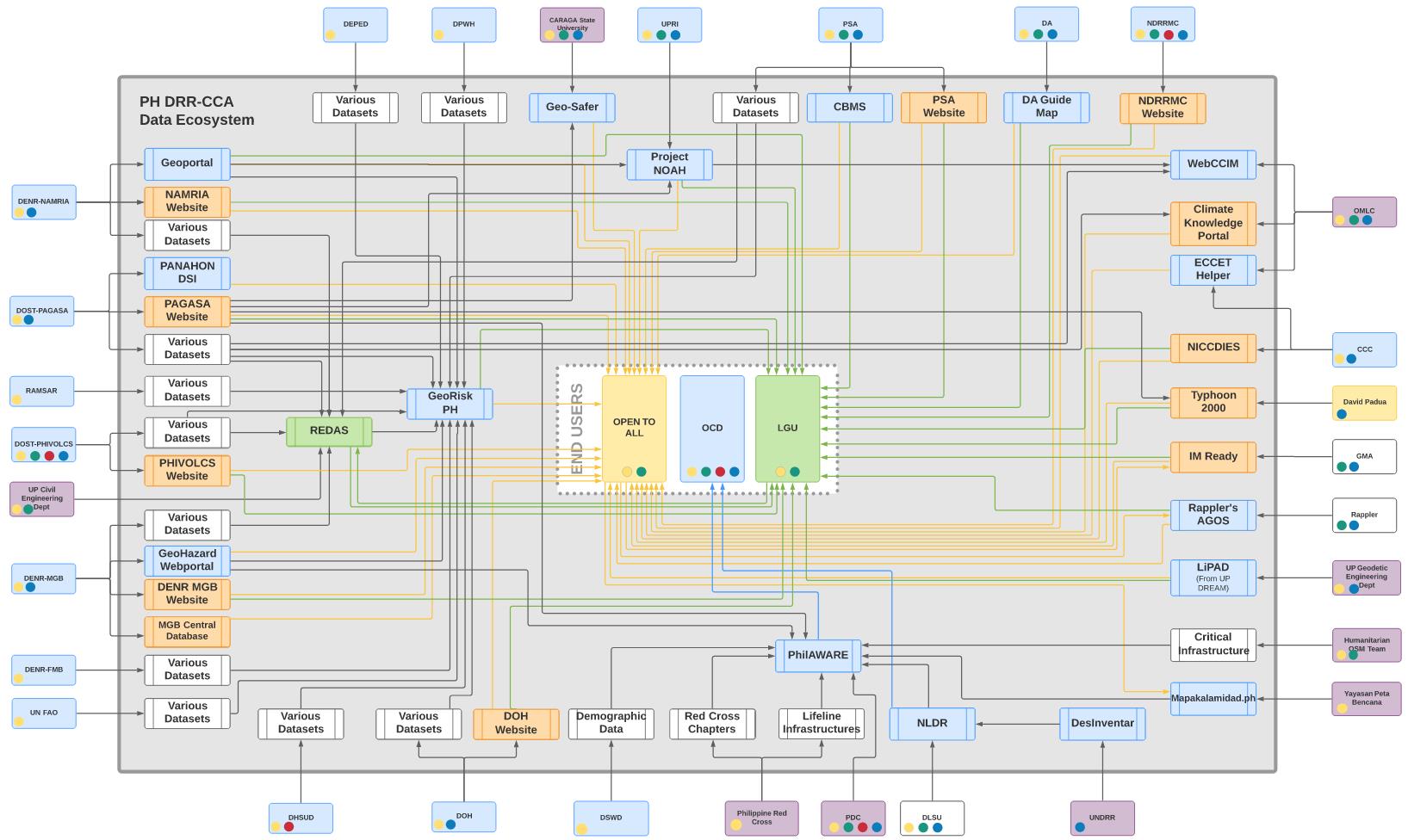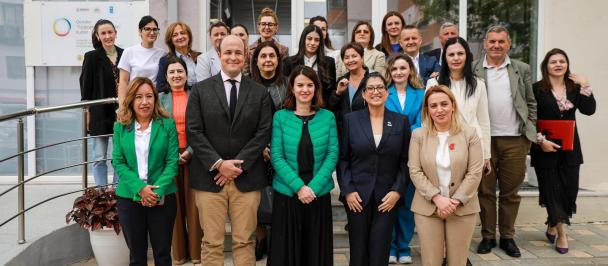Blog by Rodolfo Calzado Jr, National Coordinator, UNDP Philippines
Measure to Manage: Why Harmonized Data Standards should be at the core of the Philippines’ Digital Amelioration for Climate and Disaster Risk Management
September 22, 2022

Provincial Government compound of Dinagat islands in the aftermath of Typhoon Odette/Rai. Philippines is investing in data innovation to support disaster resilience.
— “The government should digitize and make its services more accessible while trying to bridge the growing digital divide among Filipinos”Ferdinand Marcos Jr., President of the Philippines during his first State of the Nation Address (SONA).
The directive of President Marcos to digitize bureaucracy will be implemented through the leadership of the Department of Information and Communications Technology (DICT). For climate and disaster risk management agencies, this process began as early as 2005. The National Disaster Risk Reduction and Management Council (NDRRMC), through its member-agencies and collaborators, continue to develop new digital solutions to address relevant challenges, with the fundamental understanding that decision-making must be made based on sound evidence and science. However, with impressive progress comes an equally daunting slew of challenges.
Roots of science-based decision making
The serious drive for a science-based approach to managing climate and disaster risk can be traced back to the Marcos Sr. administration with the institution of state weather agency PAGASA and vulcanology and seismology agency PHIVOLCS. Their ability to catch up to global standards steadily ramped up from 2005 to present with the implementation of projects such as REINA and READY, the passing of the PAGASA Modernization Act, increase in the budget of the Department of Science and Technology (DOST), strong public support for its expanded NOAH Program, and, more recently, spearheading the multi-agency platform GeoRiskPH, among others.
Given the multi-dimensional nature of climate and disaster, digital solutions for related challenges were not limited to science agencies. These were likewise adopted by government and non-government institutions covering other sectors like agriculture, health, environment, and land use planning, among many others. As investments flooded in, the Philippines, under its new digital mantra, eagerly consumed technology. However, progress was made predominantly through disparate initiatives of various institutions. Lacking recognition of their respective roles, as part of the country’s data ecosystem, conflicts arose from variances in analytical models, corresponding predictions, and on overlaps and ownership of mandates.

The National Disaster Risk Reduction and Management Council brings together the government of Philippines, civil sector and private sector organizations to promote resilience in the country.
Measure to manage
While many of these challenges were already apparent through the years, they were difficult to define, and therefore easy to ignore. In tune with the new administration’s agenda for digital transformation, the NDRRMC, in partnership with the United Nations Development Programme (UNDP), and supported by the government of Japan, worked together in mapping out and analyzing the climate and disaster management data ecosystem of the country.
The study findings were accepted by the NDRRMC earlier this year. Together with the results of the UNDP study on the effect of the digital divide to vulnerable groups in the Philippines, the findings were used to develop a Digital Readiness Strategy (DRS) as supplement to the new NDRRMC Plan 2020-2030, and adopted in policy through NDRRMC Full Council Resolution No. 5, s. 2022. Some of the most critical parts of the strategy, which UNDP is supporting through its SHIELD Program, are as follows:
First, there must be a consensus on data standards. The data governance study revealed that the interconnectivity of different developed (or soon-to-be) digital tools for climate and disaster risk management will be impossible without an agreement on what data standards should be followed.

Data governance study - Data Flow Diagram. The model was introduced to the National Disaster Risk Reduction and Management Council of the Philippines.
Second, to aid the data standardization initiative, a multi-agency data quality assurance group must be formed to serve as administrators of the data. Towards this, a high-level data governance structure, centered on the DOST GeoRiskPH platform to serve as a data warehouse, must be strengthened. While the data warehouse, which will mirror and quality assure (not own) the data, was already implemented, agencies have not been able to contribute effectively given their diverse interests in data generation and usage. The multi-agency data administrator group will help address this issue.
Third, there must be an open data component to the high-level structure that will be public-facing. This component must ensure that individuals or institutions, within or outside government, can freely draw from and contribute data for climate and disaster risk management purposes. This will ensure that creativity and innovation in the space will continue to foster, while preventing further convolution of the country’s data ecosystem.
Fourth, management and monitoring of the data ecosystem and the country’s progress in pursuit of digital maturity must be institutionalized at the country level. The Digital Disaster Risk Reduction Maturity Model (DDRRMM) methodology was developed with the support of UNDP and introduced to the NDRRMC as a tool for monitoring its progress. Mainstreaming this will help the government ensure that improvement is continuous and subsist beyond political timelines.
United in data
Digital transformation, specifically the pursuit of digital maturity, is a complex undertaking. It requires shifting our perspective from the fulfillment of a single agency mandate, towards actively seeking the good of the entire data ecosystem. To even begin to address this requires everyone to be on the same page, and thus a common picture of the data ecosystem must first be painted. Moving forward, the transformation process must be grounded simultaneously on technology, people, and governance. The data governance study revealed that, historically, the impact of trying to solve all these complex issues separately and treating them as disparate had been lackluster.
The recommended approach is eloquently summarized in a statement made by DOST Secretary Renato U. Solidum, Jr. during the DDRRMM training course jointly delivered by the Office of Civil Defense (OCD), DOST, and the UNDP last September 2022:
“Disaster is a wicked problem. In 1973, Rittel and Webber published their often-quoted treatise about social planning. Wicked problems do not render well to the methods of technical problem-solving. They are multi-dimensional, therefore hard to define, and therefore circumvent simple articulation. Their root causes are many, varied, and complex. Solving them may give rise to new problems, and one cannot say with complete confidence that the problem is solved. Because of their nature, one entity working alone, therefore, cannot solve a wicked problem.”
Selva Ramachandran, UNDP Resident Representatives in Philippines shake hands with Renato Solidum Jr., Secretary of Science and Technology of Philippines, in a joint effort to promote data innovation to build resilience in the country.
The results of the data governance study and digital readiness strategy were launched publicly on December, 6 2022.
About the Author
Rodolfo Calzado, Jr. is the National Coordinator for Digital Transformation of the UNDP Philippines’ Climate Action Programme. He has been a researcher, government worker, and international development practitioner, managing or consulting for national and regional projects on environment, resource sustainability, and climate and disaster management since 2010.

 Locations
Locations





